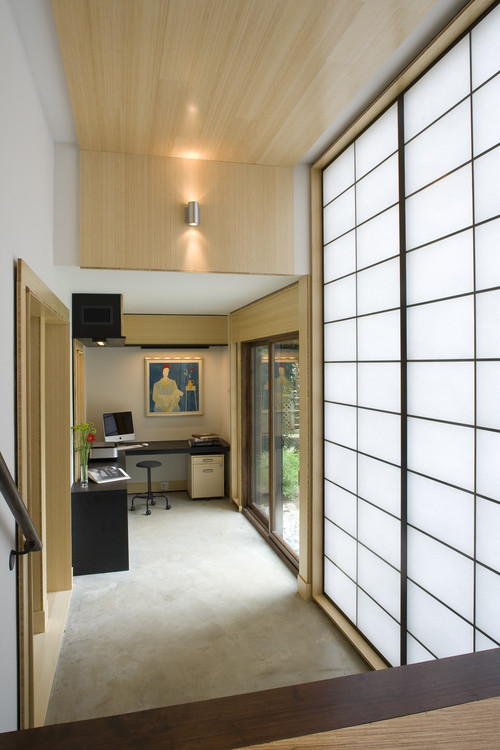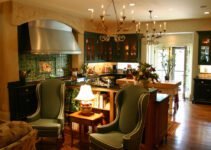Japanese panels are a modern and sophisticated solution for controlling light and fitting out the windows. Delicate and transparent, Japanese panels are very versatile and can be used in the most diverse areas of your home, from a living room into a classic style to a modern office.
Unfortunately, Japanese panels are too little known and used in the domestic area although they are modern accessories, ideal for open, bright and creative spaces.

Photo by Gardner Architects LLC – Search home office pictures
These wonderful panels cover vertically your windows realizing texture games highlighted by the light entering through the window.
The Advantages of Japanese Panels
1. Control of Light: Japanese panels allow subtle light control, also allow you to admire the view outside while providing privacy. This light control is possible by the fact that Japanese panel frames allow up to 6 layers overlap, thus making interesting games of colors and textures.
Japanese panels can be transparent, translucent or even opaque, coming in a wide variety of colors and patterns. In general, Japanese panels are well suited for large windows, glass surfaces or glass walls. In this way, the light passes through the panels and highlights them. In fact, this is actually the main quality of Japanese panels – the ability to filter light in a way so effective and enjoyable. When open, the panels let in a maximum amount of light into the room. When in closed position, they made a sunscreen that allow light to pass, but provides privacy at the same time.
2. Made from Natural Materials: Although Japanese panels are a modern solution for window decorations, these accessories are suitable for rooms decorated in contemporary style as well as traditional spaces. This is possible thanks to the many types of designs and materials that are manufactured these panels.
There are panels of coated paper, wood, fabric, leather, etc. However, the main natural fabrics used in manufacturing the panels are linen, cotton and silk. It is important to use materials slightly stiff, to emphasize the impeccable vertical of the panels.
3. Partition Walls: Besides windows, Japanese panels are used for delimiting spaces. For example, a large family room can be divided with transparent panels in several areas, such as dining area, living area, etc.
4. A Cheap Solution for Window Covering: Japanese panels can be a cheaper solution than the curtains and drapes. In addition, the panels can be used alone or together with curtains.
5. Ease of Use: Handling is another important advantage of these panels. Panels can slide freely, independently of one another, but can also act together with a cord.
Modern House – Japanese Style | How To Build A House (howtobuildahouseblog.com)


